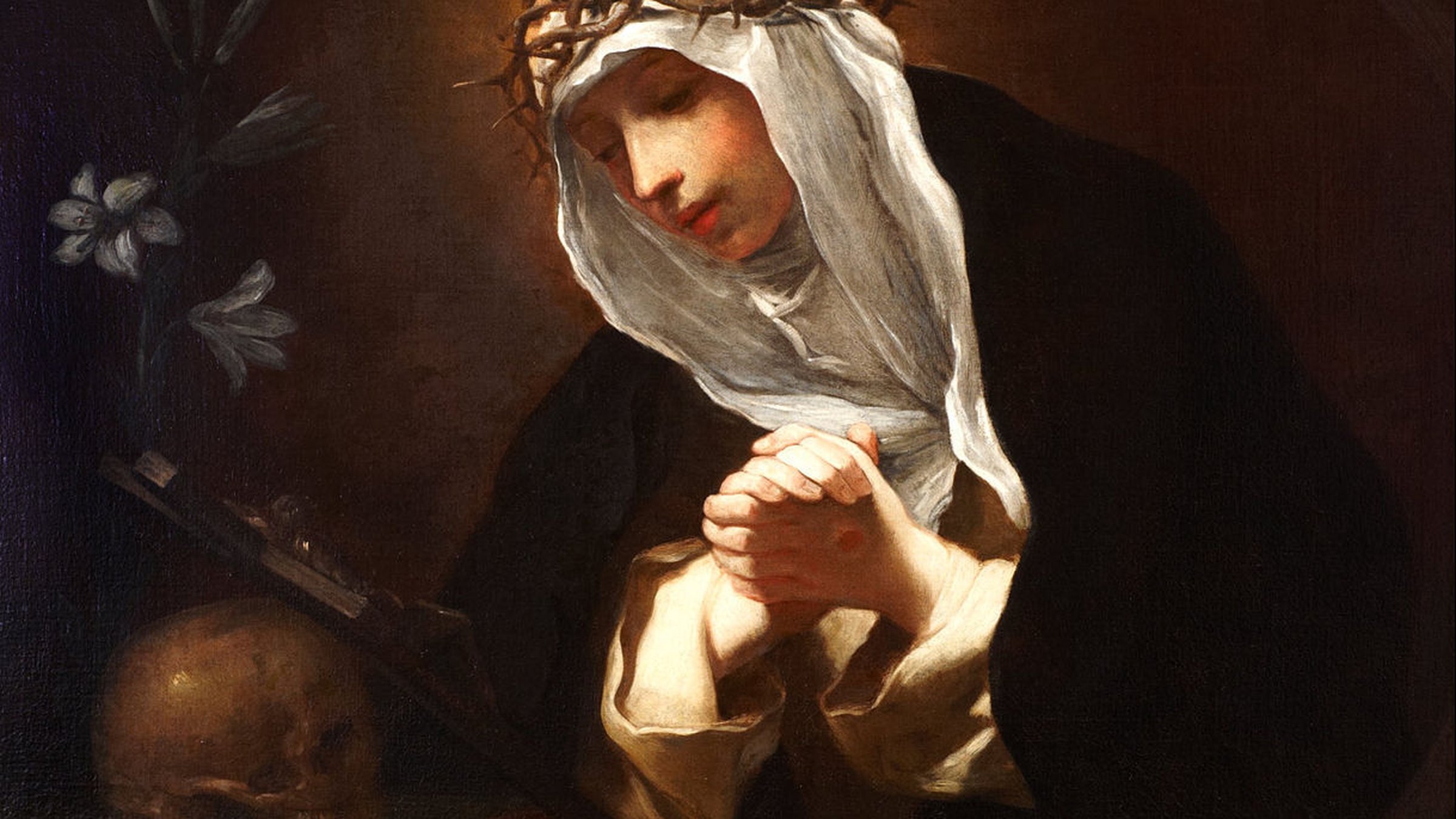Friar Raymond della Vigna was perplexed.
Sometime in 1375, the priest, a member of the Order of Preachers founded by St. Dominic, was celebrating Mass. As the moment of consecration approached, he prayed that the wafer of bread he held would become the veritable body of Christ by virtue of his speaking the words of Jesus at the Last Supper, “For this is My body”.
Genuflecting, he elevated what was now the Most Holy Body of Christ for the adoration of worshippers. Lowering the Most Blessed Sacrament, he laid It on a corporal, a square of white linen cloth. Bowing his head, he genuflected once again.
Rising, Friar Raymond was startled to see a chunk missing from the Sacred Host! Frantically, he searched under the corporal and then the rest of the altar’s mensa. He could not conceive of how he had inadvertently broken off the now missing particle. Finding nothing, he proceeded to consecrate the wine in his chalice, which became the Precious Blood of Jesus. Rather distractedly, the priest completed the Mass.
Friar Raymond of Capua is best known for his association with Catherine Benincasa, acting as her confessor and advisor for six years. Born in 1347, Catherine, the great saint of Siena, was the 23rd of 25 children. A devout child, at the age of seven, she had a vision of Jesus enthroned in the sky. As He blessed her, little Catherine vowed to consecrate her life to Him. Much later, after a period of withdrawal from the world, Catherine became a force to be reckoned with in Siena, in Italy, and even by the papacy.
Catherine moved about the city with a group of women who looked to her as the leader of their informal association called the Mantellata, i.e., “the cloaked ladies.” Although dressed in Dominican white habits and black mantles — fully enveloping cloaks — they did not take the vows of nuns, but remained lay women, married and unmarried, active in their community.
They were tertiaries, members of the Third Order devised by St. Dominic for men and women who wished to grow in spirituality as part of his order of friars and sisters, yet remain in the world. Although joining daily for Mass and prayer, the tertiaries remained part of secular life, at home and business as husbands and fathers, wives and mothers.
Assigned by the Master General of the Dominican Order to provide spiritual care for Catherine and the Mantellata, Friar Raymond spent six years traveling with, advising, and hearing their confessions. The friar gradually learned to trust Catherine’s soundness of judgment as part of her closeness to Jesus.
His confidence in her holiness was sealed in 1374. Friar Raymond, helping nurse victims of plague, was struck down himself by the dreaded disease. As he lay abed, his life ebbing away, Catherine burst into his room, joked about him taking his ease, demanded he rise and join her in caring for other plague victims. She was gone as swiftly as she had appeared.
The priest felt strength flow back into his body, recovering on the instant. Knowing how close to death he had been, Friar Raymond credited his recovery to Catherine’s storming heaven with her prayers.
In Siena, although she was often at the center of the city’s public life demanding adherence to the teachings of Christ in the administration of justice, Catherine was at heart a mystic. Spending long hours in prayer, Catherine was so loved by Our Lord that, in 1375, He bestowed on her the gift of the stigmata, the five wounds of His passion. Knowing how this miracle would astonish family, friends and curiosity-seekers, Catherine begged her beloved Jesus to keep these wounds hidden from the world. This Jesus did. The wounds became visible only after her death.
So devoted was Catherine to Jesus in the Most Holy Eucharist, for many years she ate nothing else, living solely on the Most Blessed Sacrament, a rare privilege of grace.
It was Catherine’s custom to attend Mass every day and receive Holy Communion, after which she would experience an ecstatic union with Jesus, an exalted state which might last hours. During such times, Catherine’s elation was in such ascendency she heard, saw, or felt nothing earthly.
The morning of Friar Raymond’s loss, Catherine was experiencing some difficulty walking and arrived late, the Mass having already started. Aware that her ensuing ecstasy might intrude and interrupt her friends at prayer and cause wonder among other worshippers, she persuaded herself to forego receiving Holy Communion that day. Reluctantly, the little sister remained in the vestibule, praying for a spiritual union with Jesus whom she would not receive sacramentally that day.
After divesting himself in the sacristy, Friar Raymond made another check of the altar and the floor around it, hoping to turn up the blessed segment of the Host. Finding nothing, he strode down the nave of the church, only to discover Catherine in the vestibule surrounded by her friends. She was in an ecstatic swoon.
Bringing her a chair, they sat her down and watched. Her staring eyes and the taut skin of her face framed by her coif and veil had long since ceased to trouble them, so used to her ecstasies had they become. However, since they knew she had not received Holy Communion, they were puzzled as to what had caused this stupor.
Catherine soon came to herself. When she was sufficiently rested, Friar Raymond ruefully told her about how he had somehow lost a piece of the Sacred Host at Mass. Catherine laughed heartily. Patting her confessor’s hand, she merrily assured him that the particle of the Host was not lost. She then explained the mystery. Happily, it was not necessary to bring in Sherlock Holmes to solve the case.
Our Blessed Lord, she told her friends, had played a little joke on Friar Raymond. In answer to her prayer to be united to Him sacramentally, Jesus commanded Catherine’s guardian angel to break off a piece of the Sacred Host after Friar Raymond elevated It and bring It to the little saint who loved Him so very much.
St. Catherine died in 1380 at the age of 33. Friar Raymond wrote her biography, completing it in 1395. Her spiritual writings (The Dialogue), and political boldness demonstrate her desire to "speak truth in power." She was canonized in 1461 by Pope Pius II and named a Doctor of the Church by Pope St. John Paul II.
Blessed Raymond of Capua became Master General of the Dominican Order, reforming it so well he was called its second founder. Dying in 1399, he was beatified by Pope Leo XIII on May 15, 1899, the 500th anniversary of his death.
Sean M. Wright, MA, award-winning essayist, Emmy nominee, and Master Catechist for the Archdiocese of Los Angeles, is a parishioner at Our Lady of Perpetual Help in Santa Clarita. he answers comments at [email protected].












